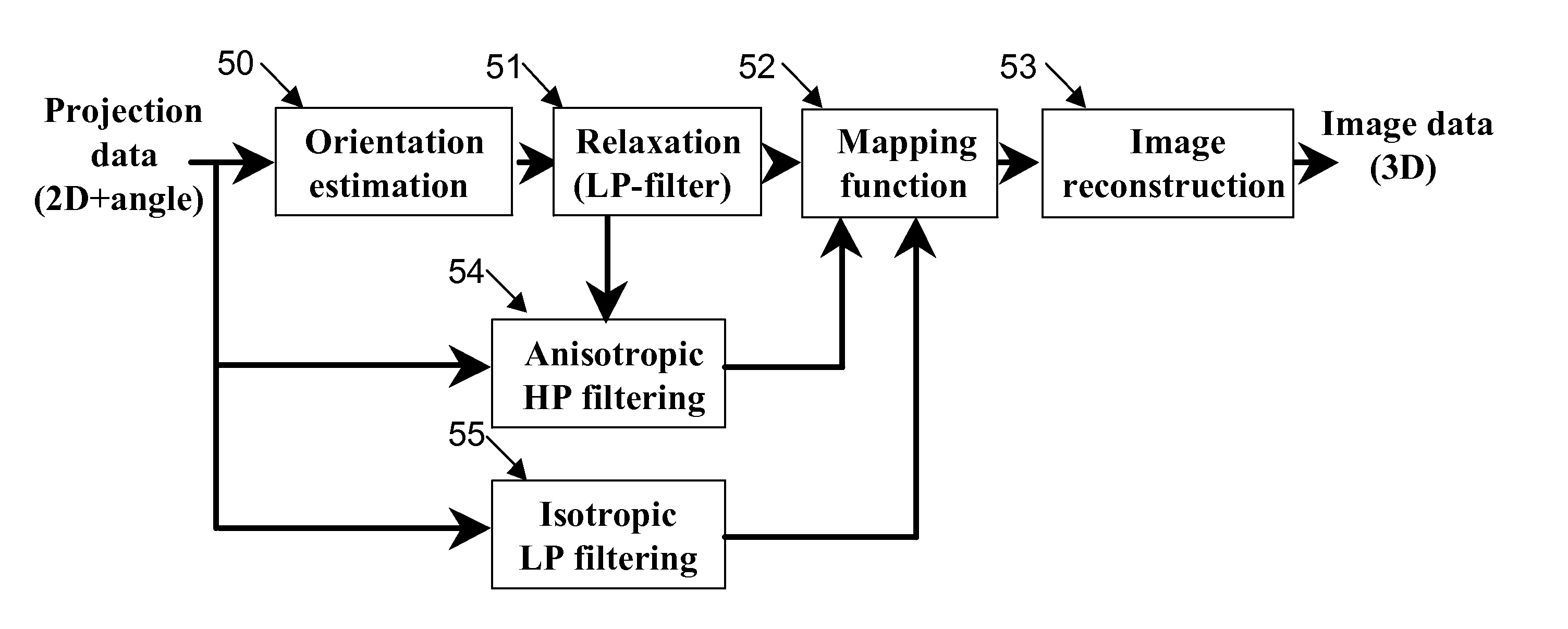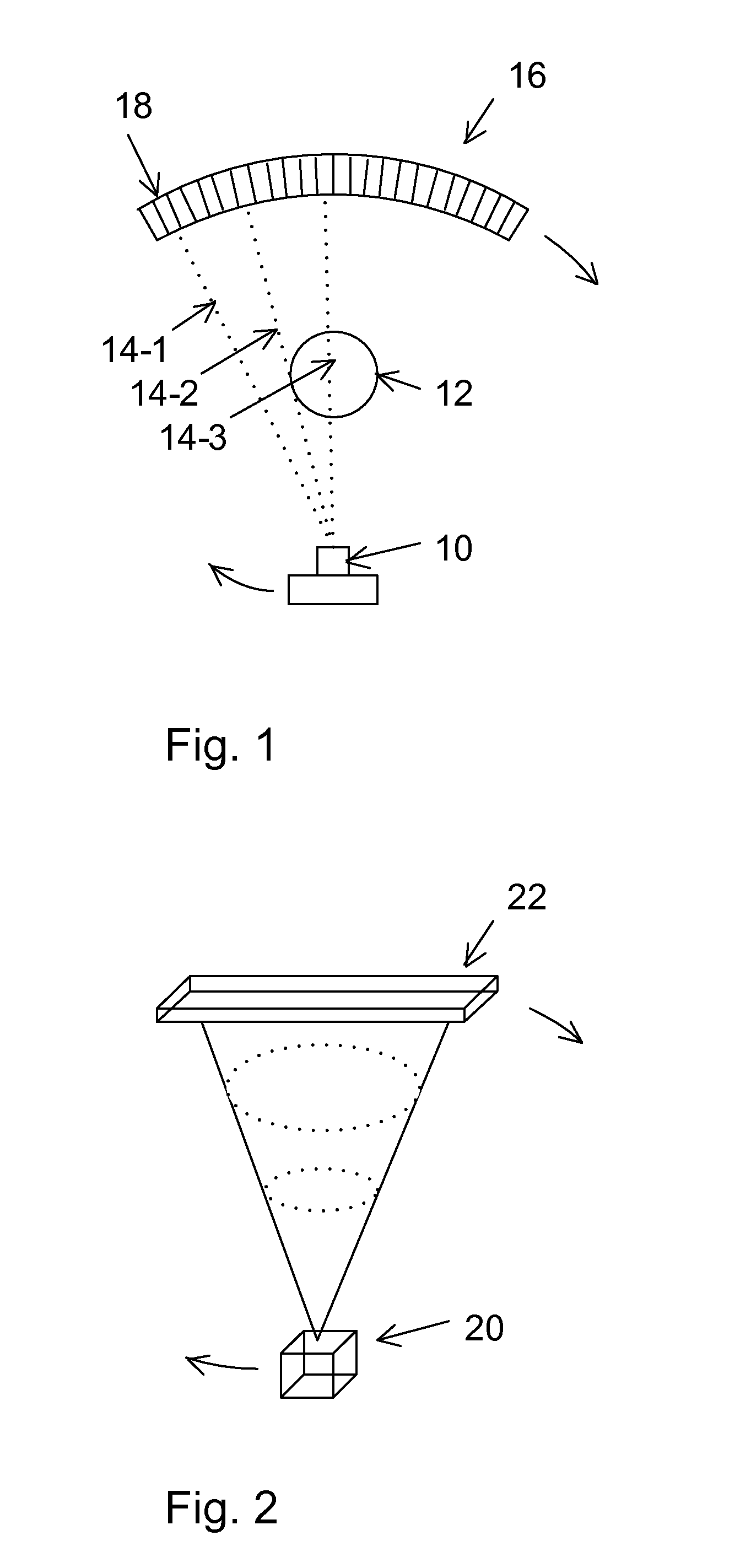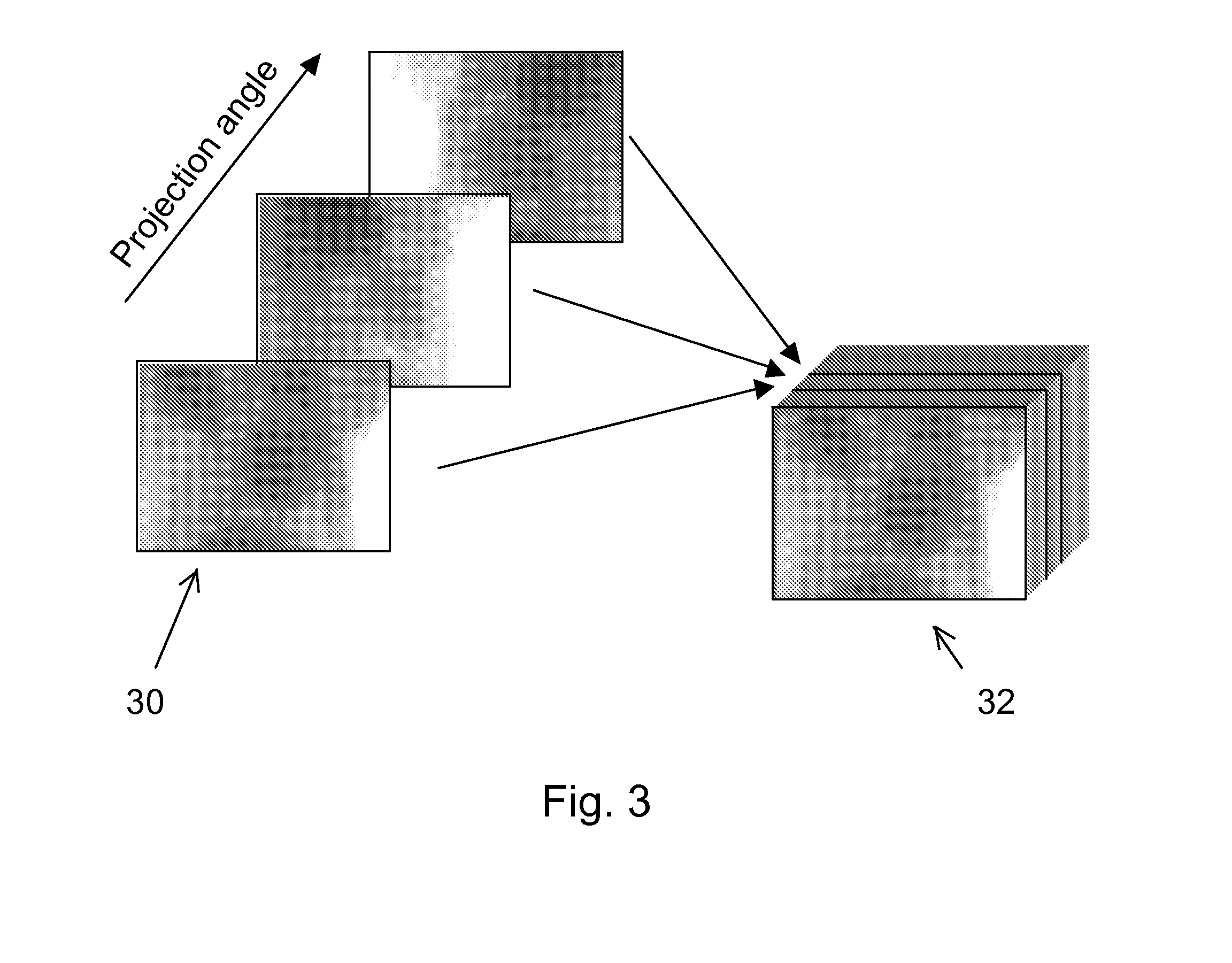Adaptive anisotropic filtering of projection data for computed tomography
a computed tomography and anisotropic filtering technology, applied in image enhancement, instruments, applications, etc., can solve the problems of less efficient post processing approaches in reducing noise induced streak artifacts, and achieve the effect of reducing high frequency nois
- Summary
- Abstract
- Description
- Claims
- Application Information
AI Technical Summary
Benefits of technology
Problems solved by technology
Method used
Image
Examples
Embodiment Construction
[0017]FIG. 1 is a schematic diagram of CT apparatus including an x-ray source 10 and an x-ray detector 20 which are rotatibly translated around an object 12 with detector 20 providing measurement of attenuated x-rays passing through object 12 and providing data for reconstructing an image of a slice through object 12. The x-ray source emits a fan or cone shaped beam towards a scan object such as a patient, and the beam after being attenuated by the scan object impinges upon an array of radiation detectors, which in turn produce electrical signals indicative of the attenuated beam. Multiple sources could also be used to generate a parallel x-ray beam, or a single narrow beam could be scanned across the object. The electrical signals are then transmitted to a data processing unit for analysis and image reconstruction.
[0018]As illustrated, a portion of the x-ray beam 14-1 travels directly to a detector element 22 in the array 20 without passing through object 12, a portion of the x-ray...
PUM
| Property | Measurement | Unit |
|---|---|---|
| frequency | aaaaa | aaaaa |
| CT | aaaaa | aaaaa |
| computed tomography | aaaaa | aaaaa |
Abstract
Description
Claims
Application Information
 Login to View More
Login to View More - R&D
- Intellectual Property
- Life Sciences
- Materials
- Tech Scout
- Unparalleled Data Quality
- Higher Quality Content
- 60% Fewer Hallucinations
Browse by: Latest US Patents, China's latest patents, Technical Efficacy Thesaurus, Application Domain, Technology Topic, Popular Technical Reports.
© 2025 PatSnap. All rights reserved.Legal|Privacy policy|Modern Slavery Act Transparency Statement|Sitemap|About US| Contact US: help@patsnap.com



